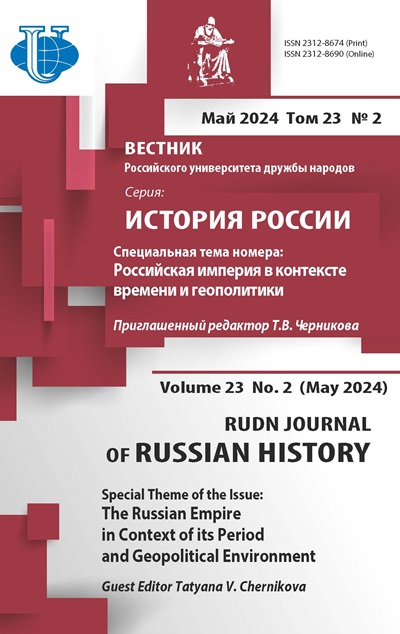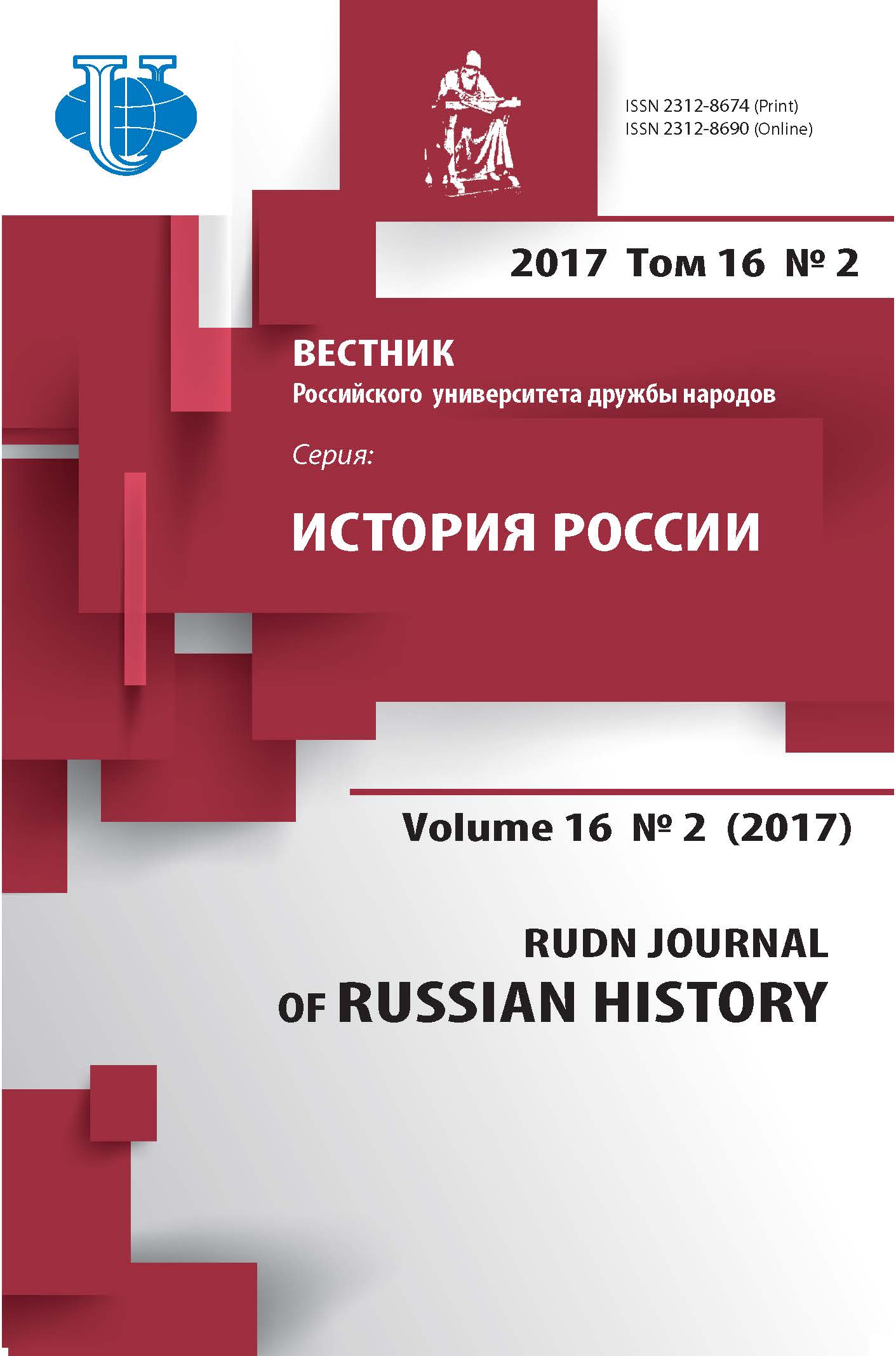INFLUENCE OF THE RUSSIAN REVOLUTION ON THE MARCH 1ST MOVEMENT IN KOREA (1917-1919)
- Authors: Lebedev V.V1
-
Affiliations:
- Korea University
- Issue: Vol 16, No 2 (2017)
- Pages: 281-302
- Section: REVOLUTION AND WORLD
- URL: https://journals.rudn.ru/russian-history/article/view/16660
- DOI: https://doi.org/10.22363/2312-8674-2017-16-2-281-302
Cite item
Full text / tables, figures
Abstract
This article seeks to address the question of how the influence of the October Revolution reached Korea and to what extent it affected the outcome of the March 1st Movement. The author analyzes the documents from the Diplomatic Archives of the Ministry of Foreign Affairs of Japan and the articles of the official mouthpiece of the colonial government Maeil Sinbo from 1917 to the mid-1920s. Based on the analysis of the primary sources, the author reveals two main channels of receiving information of the revolutionary events in Russia. The first of them was the official newspaper of the Governor General. The main actions of the government of Soviet Russia covered by this newspaper aroused such great interest among the Korean public that in order to prevent an “incorrect interpretation” of these events, the Governor General had to repeatedly dedicate the front page of the newspaper to the articles directly or indirectly condemning the 1917 October Revolution. The second channel was the Korean labour migrants in Primorye. Coming to Russia in search of a better life, most “unnaturalized” migrants faced difficult economic and social conditions. The February Revolution of 1917 which opened the discussion of the future of the Korean population in the Far East became a prerequisite for the politicization of a large part of the labour migrants who witnessed the revolutionary changes in Russia. The author concludes that the ideas of the 1917 October Revolution found active response in the hearts and minds of the masses in Korea. The political and ethnic oppression intensified the social and political contradictions in the colonial Korea resulting in the nation-wide March 1st Movement of 1919 that became the turning point in the history of the world political anti-colonial movement in Asia. The national-bourgeois idea of “gaining independence through diplomacy” suffered a crushing defeat but it retained the spirit of the March 1st Movement in history and laid the foundation for a new generation of revolutionaries who played a crucial role in the events of 1945-1953.
About the authors
Vasilii V Lebedev
Korea University
Author for correspondence.
Email: kutuzkin21@hanmail.net
Graduate student of the Department of History at Korea University
145, Songbuk-gu, Anam-ro, Seoul, 02841, The Republic of KoreaReferences
- Boram Yi. Prelude to Conflict, 1910-1948. The Ashgate Research Companion to the Korean War. United Kingdom: Ashgate, 2014.
- Gafurov BG., VaninYuV., Kazakevich IS, editors. IstoriiaKorei s drevneishihvremen do nashihdnei [The History of Korea from Ancient Times to Our Days]. Moscow: Nauka; 1974:2 (in Russian).
- Kurbanov S.O. Istoriya Korei s drevnosti do nachala XXI veka [History of Korea from antiquity to the beginning of the XXI century]. St-Petersburg: Izdatelstvo Sankt Peter-burgskogo universiteta; 2009.
- Tihonov V.M., Kan Mangil’. Istoriya Korei [History of Korea]. Moscow: Natalis; 2011: 2.
- Vanin YuV. Oktiabrskaia revoliutsiia 1917 goda v Rossii I eio vzaimosviaz’ s Pervomar-tovskim vosstaniiem 1919 g. v Koree [The October Revolution of 1917 in Russia and its relationship with the Pervomartov uprising of 1919 in Korea]. Istoriia Korei. Izbran-nye Stat’i [History of Korea. Featured articles]. Moscow: Institut vostokovedeniia RAN; 2016: 246-259 (in Russian).
- Kang Man-gil, Kochyö ssün Hanguk hyöndaesa [Revised Contemporary History of Korea]. Seoul: Changbi Publishers; 2011(in Korean).
- Im Kyöng-sök, Hanguk Sahwejuui-uikiwön [The Origins of Korean Socialism]. Seoul: Yöksapip’yöngsa; 2003 (in Korean).
- Kantöhakenin,Tomonköhomen Jyökyöihö [Agent in Jiandao. Report about the situation in the region of Tumen river]. Yi Kün-t’aek, et al., editors. Chungguk Tongbuk chiyök minzhok undong. Hanguk tongnip undongsa charyo [National movements in the North Eastern region of China. Documents on Korean independence movement], 2004; 2(40): 283-284 (in Japanese).
- Vada K, Shirinia K, editors. VKP(b), Komintern i Koreia: 1918-1941 [VKP(b), Comintern and Korea]. Moscow: ROSSPEN; 2007 (in Russian).
- Obata Yhkichi, Chosenjin kagekishugisha An Konsei-ni kansuru ken [The case concerning Korean extremist An Künsaeng]. Gaimusho. Futeidan kankei zakken Chosenjin no bu Senjin to kagekiha [Ministry of Foreign Affairs of Japan. Miscellaneous matters concerning impertinent groups, Korean part, Koreans and the Extremists]. 09.20.1919; 1 (in Japanese).
- Shi Yuanhua, Jiang Jianzhong, et al., editors. Hanguo duliyundong yu Zhong guoguanxi-biannianshi (1919-1949) [Annals of Korean Independence movements’ relations with China (1919-1949)]. Beijing: Social Sciences
















